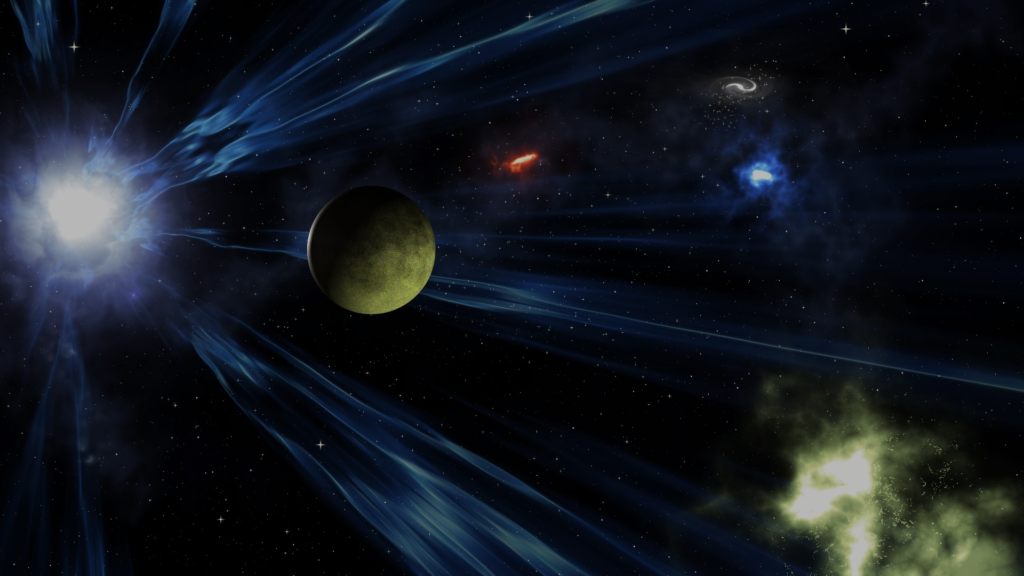## Unraveling the Mysteries of Black Holes: Cosmic Vacuum Cleaners
Have you ever imagined a place so dense, so gravitationally powerful, that not even light can escape its clutches? That’s the mind-bending reality of a black hole – a cosmic enigma that continues to fascinate and challenge scientists. Forget science fiction; black holes are real, and their existence is one of the most compelling stories in the universe. Prepare to delve into the heart of these captivating cosmic vacuum cleaners!
### 1. From Giants to Ghosts: The Birth of a Black Hole
Black holes aren’t born in a vacuum (pun intended!). They’re the dramatic end result of a massive star’s life cycle. Imagine a star many times larger than our Sun, furiously burning through its hydrogen fuel. When this fuel runs out, the star’s core collapses under its own immense gravity. For stars less massive than about 20 times the Sun, this collapse results in a white dwarf or a neutron star. But for the true behemoths, the collapse is cataclysmic! The gravity becomes so intense that it crushes the star’s core into an infinitely small point called a singularity. This singularity is surrounded by an event horizon – the point of no return, beyond which nothing, not even light, can escape.
Think of it like this: imagine trying to throw a ball upwards with such a strong gravitational pull that the ball never comes down. That’s what the event horizon represents for light and matter. The immense gravity warps spacetime around the singularity, creating the black hole’s distinctive gravitational well.
### 2. Gravitational Giants: How We Detect the Invisible
Since light can’t escape a black hole, you might wonder how we even know they exist. We can’t directly *see* them, but we can detect their profound gravitational influence on surrounding matter. This influence manifests in several ways:
* **Accretion Disks:** As matter spirals into a black hole, it heats up to incredibly high temperatures, emitting intense X-rays and other radiation that we can detect with telescopes. Imagine a swirling whirlpool of superheated gas and dust orbiting the black hole before being swallowed.
* **Gravitational Lensing:** Black holes can bend the light from distant objects, acting like a giant cosmic lens. This bending allows us to indirectly observe the presence of a black hole.
* **Orbital Dynamics:** By observing the movement of stars and gas clouds orbiting an unseen object at incredibly high speeds, astronomers can infer the presence and mass of a black hole.
### 3. Types of Black Holes: Supermassive and More
While the stellar-mass black holes (formed from collapsed stars) are fascinating, there are other types, most notably supermassive black holes. These giants reside at the centers of most galaxies, including our own Milky Way. They can have masses millions or even billions of times that of our Sun! The exact mechanism of their formation is still a subject of ongoing research, but one theory suggests they form from the merger of many smaller black holes.
There’s also the hypothetical primordial black holes, which may have formed in the very early universe, and intermediate-mass black holes, falling somewhere in between stellar-mass and supermassive.
### 4. Black Holes and the Future of the Universe
Black holes are more than just cosmic curiosities; they play a crucial role in the evolution of galaxies. Their immense gravity shapes the distribution of stars and gas, influencing the overall structure of their host galaxy. Understanding black holes is therefore essential to understanding the universe’s evolution. Furthermore, the study of black holes has led to breakthroughs in our understanding of gravity and spacetime, pushing the boundaries of theoretical physics.
### Conclusion: Dive Deeper into the Darkness!
Black holes, once purely theoretical entities, are now a well-established part of our cosmological understanding. Their mystery, however, remains compelling. From their dramatic birth to their influence on galactic evolution, these cosmic wonders continue to challenge and inspire us. Want to learn more? Explore resources like NASA’s website, or search for documentaries on black holes. Share your thoughts and questions in the comments below – let’s continue the conversation!


